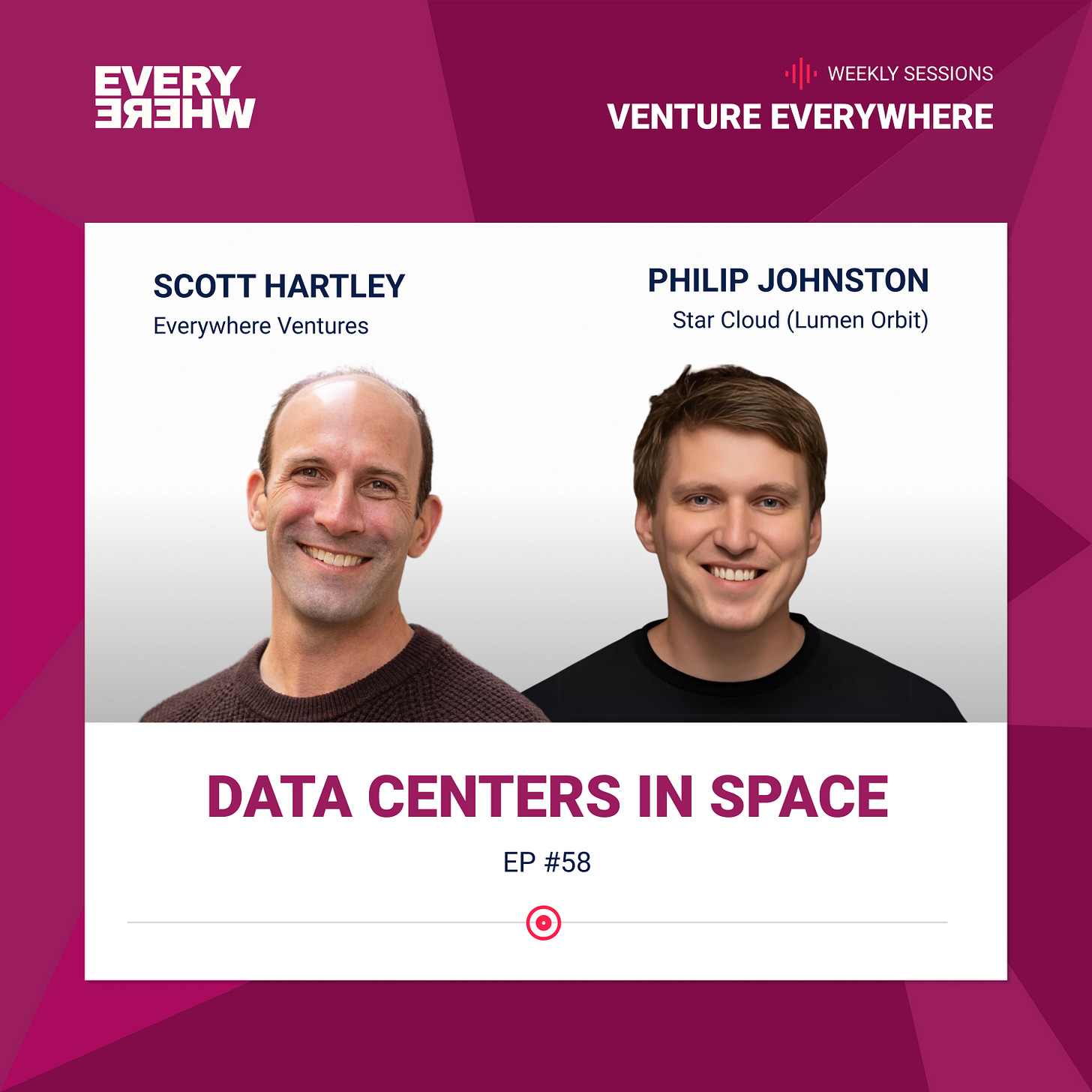Starcloud Is Betting the Future of Data Centers Isn’t on Earth—It’s in Orbit
Starcloud is developing orbital data centers that leverage 24/7 solar energy and passive cooling to support hyperscale AI training clusters in space.
Where’s the best place to build the data centers of the future? According to Philip Johnston, CEO of Starcloud, the answer is simple: not on Earth.
The space infrastructure startup—founded just last year—is making waves with a bold proposition: that orbit is not only a viable location for data centers, but inevitable. Backed by falling launch costs and rising demand for compute power, Starcloud is one of a handful of companies daring to think beyond terrestrial constraints. And its vision just got a major spotlight in The Economist.
From Ground to Orbit: Why Space Makes Sense
Starcloud’s case for space-based computing rests on a few big advantages. In a dawn-dusk, sun-synchronous polar orbit, a data center can access continuous solar power—generating up to five times more energy than the same array would on Earth, due to the lack of atmospheric interference.
The cold vacuum of space also provides a compelling environment for cooling. And since weightless data can be transmitted from orbit via satellite internet (think Starlink), there’s no need for the physical in-and-outflows that would complicate, say, a space factory.
“Once launch costs fall far enough,” Johnston told The Economist, “it’s completely inevitable that all data centres will go into space.”
The Plan: Starcloud 1, 2, and Beyond
Starcloud’s first step into orbit is already in motion. This summer, the company plans to launch Starcloud 1, a fridge-sized demonstrator satellite packed with NVIDIA AI chips and powered by a 1kW solar array. According to Ezra Feilden, the company’s Chief Technology Officer, these chips will offer 100x more processing power than anything previously sent into space.
But Starcloud 1 is just the warm-up. Starcloud 2, planned for 2026, will scale everything up: 100x the power, 100x the compute. The first commercial satellite is expected to follow with a 1MW solar array. And by the early 2030s? Starcloud envisions deploying 40MW container-sized orbital data centers, powered by a 4km x 4km solar array generating 5GW of clean energy.
Ambition vs. Reality
Naturally, skeptics are asking hard questions. Data Centre Dynamics has challenged Starcloud’s assumptions on solar output and shielding requirements, as well as the risks of orbital collisions. Johnston remains confident, pointing to recent studies—including one by aerospace giant Thales—that align with Starcloud’s projections on power generation, thermal control, and orbital management.
He also notes that Starlink and other satellite internet networks already use conventional terrestrial solar panels with only light shielding in similar orbital zones.
Everything hinges on launch economics. Starcloud is betting that SpaceX’s Starship and other heavy-lift, reusable rockets will slash costs by more than 99%, making the upside of solar-powered orbit worth the initial investment. And unlike space hotels or manufacturing facilities, data centers only need to move bits—making them far more practical to operate from orbit.
Why It Matters
With AI compute demand surging and terrestrial data centers facing energy, cooling, and real estate constraints—not to mention local opposition—Starcloud’s vision taps into a growing sense of urgency around infrastructure innovation.
And they’re not alone. Industry whispers suggest Google and other cloud giants are also exploring space-based compute. For now, Starcloud is the one turning concept into countdown—with a demo launch just months away and a blueprint for how to scale from kilowatts to gigawatts above Earth’s surface.
If successful, Starcloud won’t just be changing how we process data. It’ll be rewriting where the cloud lives.
Read more on The Economist
Listen to Philip Johnston with Scott Hartley on the Venture Everywhere podcast: Data Centers in Space. Now on Apple & Spotify and check out all our past episodes here!


